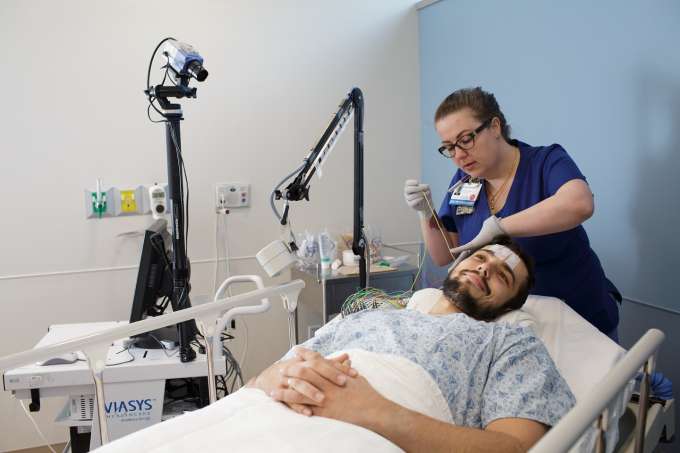Electro Encephalo Gram (EEG)

Electroencephalography (EEG) is electrophysiological monitoring method to record electrical activity of the brain. EEG refers to the recording of the brain's spontaneous electrical activity over a period of time, as recorded from multiple electrodes placed on the scalp. Electrodes are small metal disc attached to scalp with wires. Wires are attached with recording instruments. Electrical activity of brain recorded as wavy lines over periods of 30-40 minutes which help Neurologist for analysis.
EEG is mainly used for diagnosis of various seizure disorders. It is also used to diagnose sleep disorders, coma, encephalopathies , encephalitis and brain death. It is also used to differentiate Seizure from Pseudo-Seizure. EEG is also useful in ICU to rule out life threatening condition like status epilepticus.
It is painless and safe procedure and not associated with any future risk.
- Wash your hair the night before. Do not put any oil, gel or hairspray on the hair. If the hair is long, do not braid or put it up. No hair extensions.
- To get the maximum information from this test we try to record EEG during wakefulness and sleep.
- Continue to take any medications prescribed by your doctor (we will ask you to list your medications prior to your EEG)
- If a sleep-deprived or sleep EEG is to be obtained, the patient might be asked not to sleep for some hours or for all of the night before the test.
Facilities
-
Satva Neuro Clinic
Naroda :
Satva Neuro Clinic
208- 209, Galaxy Arcade,
Near Galaxy Cinema,
Naroda, Ahmedabad-382330, Gujarat.
For Appointments : +91 98240 28787
SG Highway, Sola :
Satva Neuro Clinic
Satva Neuro Clinic- Dr Samir Patel
103, Empire Doctor House,
Near Kargil Petrol Pump,
SG Highway, Sola, Ahmedabad - 380060, Gujarat.
For Appointments : +91 90990 28787
OPD Hours
Mon-Sat: 5.30 PM - 7.30 PM
E-Mail
satvaneuro@gmail.com
